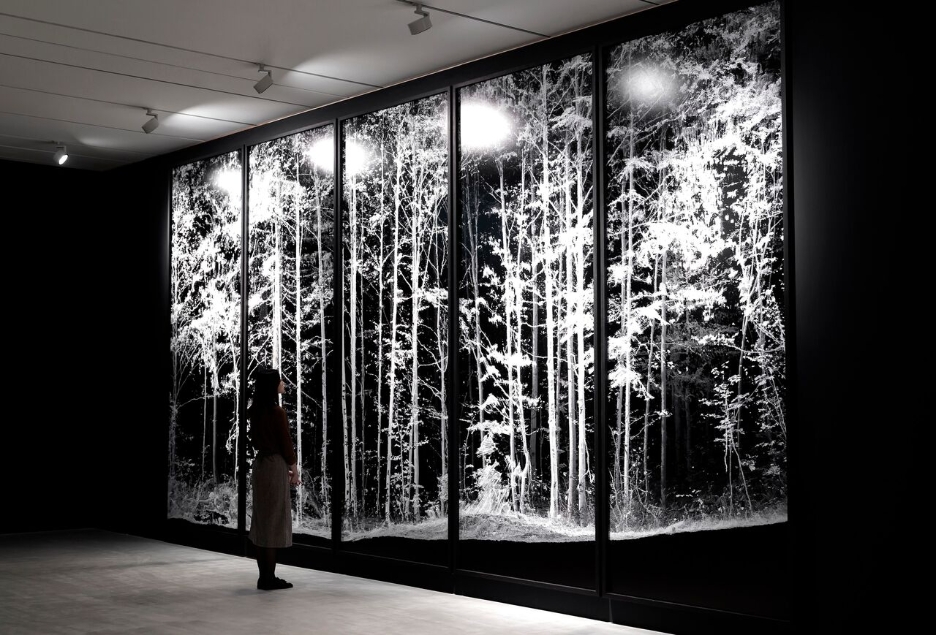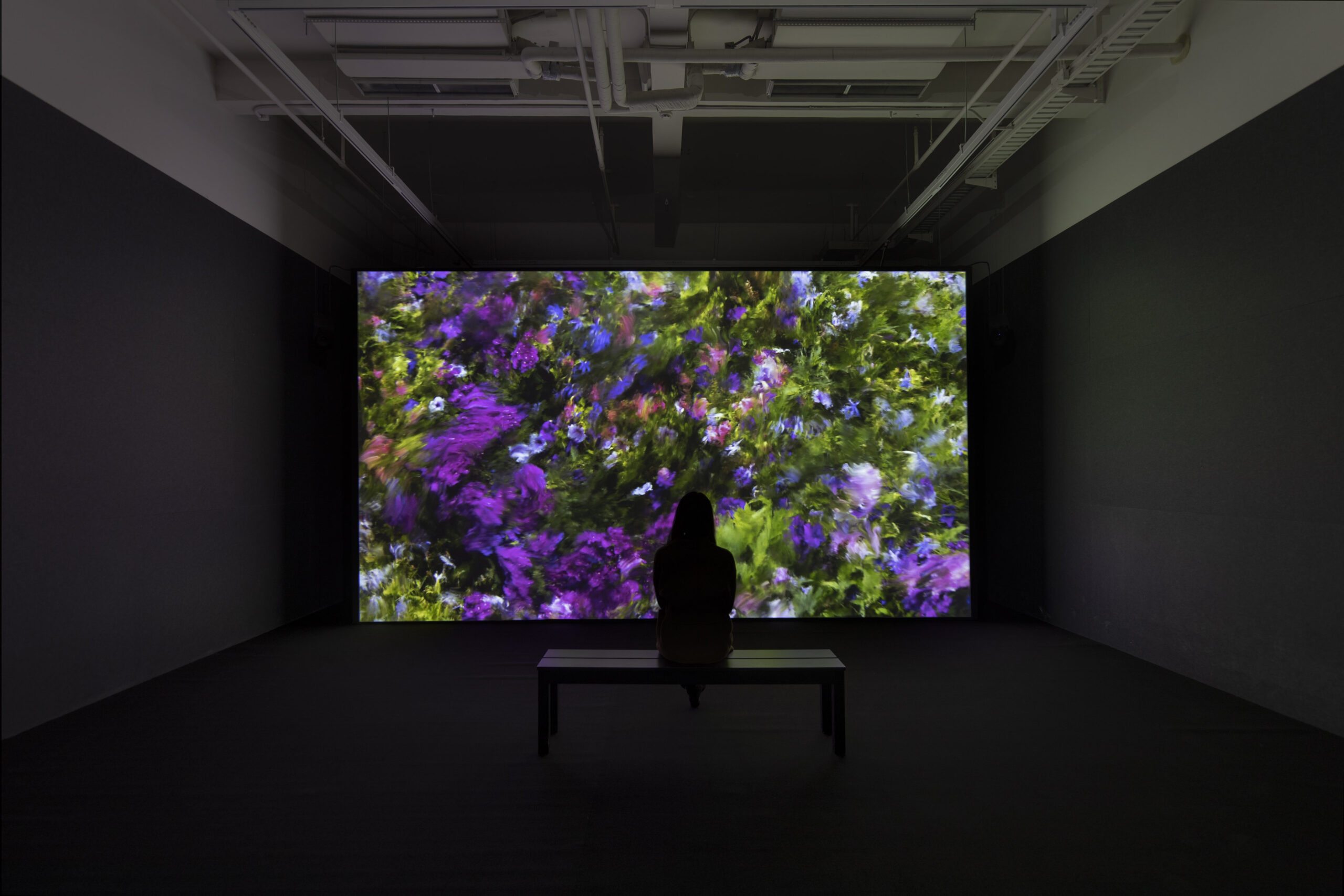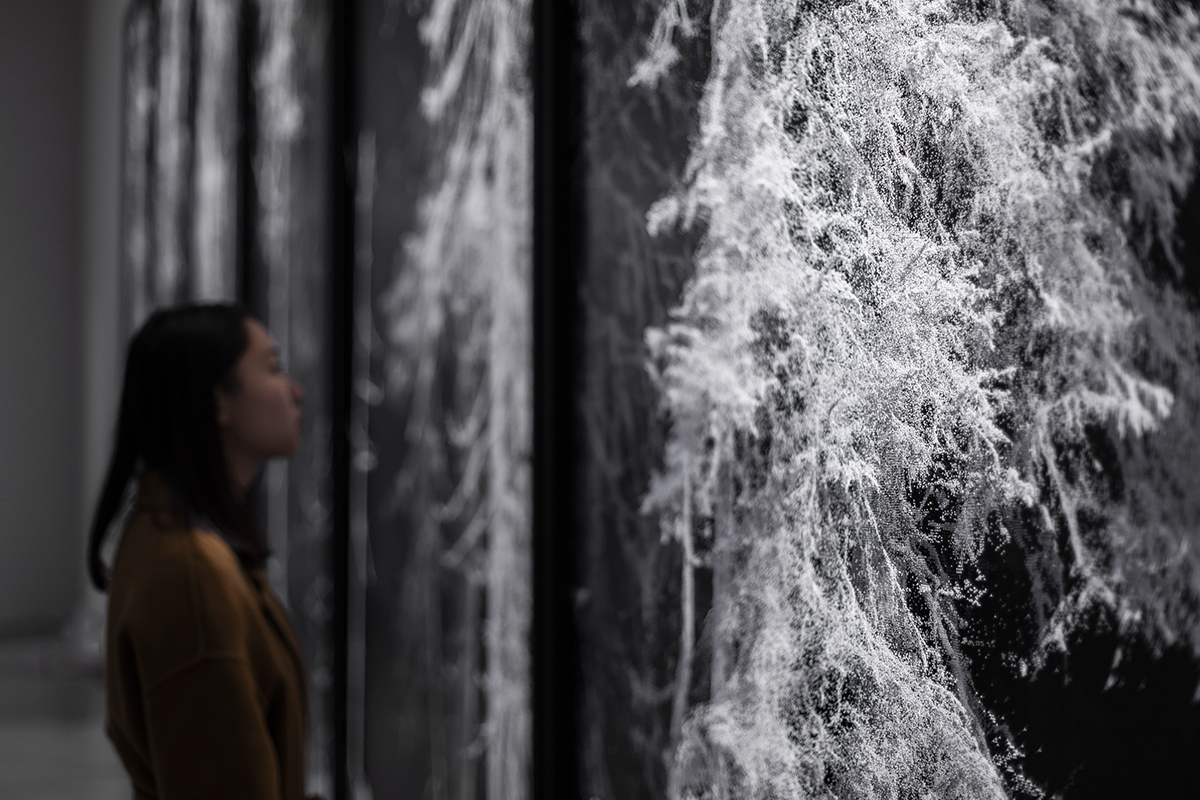“Painting embraces within itself all the forms of nature.”
– Leonardo da Vinci
Within the structure of a leaf or the evolutionary sequence of a branch lie mathematical functions that describe its order and development. This statement is not new. Yet it is precisely these functions that form the basis for the possibility of observing nature today from a new perspective, one that opens up equally new reflections on our relationship with reality as human beings.
The observation and representation of nature lies at the heart of humanity’s primordial bond with its surroundings; a practice that has always advanced in parallel with technological developments. In this context, it is fitting to evoke Leonardo da Vinci. His approach to knowledge was visual in nature: painting was in fact a tool for investigation. His virtuosity did not end in the celebration of artistic practice, but served instead to understand the structures of the natural world. Drawing allowed him to read nature and to discover both its forms and its evolutionary processes. A vision of art, then, as a methodology of scientific research.
The fifteenth century witnessed a great advancement in botanical studies also thanks to the spread of herbals, in which detailed illustrations accompanied the descriptions of plants. Botanical gardens were their cradle, illustrious witnesses to the progress of the scientific method and botanical science, which thus also passed through art to define itself as a discipline. Visual representation, therefore, has never ceased to accompany science in the processes of understanding the world.
Botanical morphogenetic research increasingly relies on computers to analyze nature based on the mathematical constants it contains. High-resolution photography and 3D scanning are used for data collection; advanced software creates accurate simulations. These tools hold potential not only for technical applications, but also for the new visual languages they open up: those of the digital realm.
This is the starting point of Quayola’s reflection, nature is no longer merely the subject of inquiry but, just as it was for the painters of the past—particularly the Impressionists—a pretext for exploring a new way of reading the world. It is the process itself that becomes the true subject, enabling an investigation of the evolutionary horizon we are currently traversing as human beings.
Thus, alongside first nature, a second nature unfolds. Second nature is that which emerges from observation through the lens of technology. A nature with a new and different face. The logic of computers, in fact, is no longer subordinate to our own. Artificial intelligences possess autonomous systems of perception and encoding—similar to human faculties in some respects, vastly different in others. Technology has therefore become a full-fledged agent in the understanding of nature, introducing new aesthetics to which humanity is now called to align itself.
When contemplating Quayola’s images, we realize they are not representations of reality: what we see are representations of simulations of nature made by a computer. This introduces yet another layer of interpretation: the human reading of the machine’s visual codes. Yet to speak of “representation” is not entirely accurate: this is an exercise in abstraction. It is the machine’s way of understanding the world.
The video Jardins d’Été (45-minute loop) and the related prints (Jardins d’Été, inkjet prints) are digital simulations that recall Impressionist paintings, except here the brushstrokes are generated by algorithms processed through software. The reference matrix comes from video footage of the gardens of the Château de Chaumont-sur-Loire in France, meaning that the movements in the final simulation are extracted from the actual motion of the plants. However, the source material almost loses its importance as the machine proceeds autonomously to create painterly patterns. Only in the initial phase does it draw from the movements and colors of the reference image, eventually generating independent simulations.
Thus, the observation of nature is merely a starting point, a pretext for investigating new cognitive logics.
Similarly, in the Remains project, the forest is represented through data collected with 3D scanners, which use a high-resolution laser system moving through space. The data are then rendered in the form of millions of white dots. On the one hand, the machine’s reading of the forests of the Vallée de Joux (Switzerland) is extremely precise; on the other, it also reveals imperfections and drops in resolution. Here too, we can observe how the computer behaves when faced with specific conditions, for instance, an unusual refraction of light due to humidity.
The large format becomes necessary in this context, making visible the intrinsic characteristics of the forest scanning process by the laser, and offering a sense of the scale at which the computer operates. On one hand, the level of detail is extraordinarily high. On the other hand, in both Remains and Jardins d’Été, the image’s precision appears softened or reduced.
As in Impressionist technique, the reduction of visual information paradoxically reveals a great expressive power. Here too, it is precisely this reduction that conveys the complexity of the process.
In both forms of instrumentation, the work demands a significant amount of time: long periods of observing the machine’s behavior and the data it returns, selecting that data, reconfiguring the tools, and then prompting the machine to re-read the reference scene. The images we see today are the result of this cyclical process.
These are extended timeframes, much like those of the painter who, from dawn until dusk, would immerse himself in nature to paint it. It is also a process of mutual understanding between the human and the machine. In light of this, a further and crucial layer of the process and of critical reflection comes into play: the intervention of the artist in the machine’s actions, after having understood and learned its visual system and its logic of interpreting reality.
This is why we can speak of a second nature: a second nature to be observed, one that is different from the one our human experience has accustomed us to. What emerges is not only a new reading of landscapes and natural patterns, but also a reflection on human evolution. These works invite us to confront a pressing truth: computers were once programmed to resemble human beings, but today many of their processes are no longer accessible to the human mind. It is we who are now transforming our ways of thinking and seeing our systems of representation and our aesthetics in order to come closer to their capabilities. A mutual domestication.
This leads us to the most significant discourse activated by Quayola: that of our relationship with technology. It is fitting, then, to once again invoke the term second nature. In the history of thought, it refers to the status of the human being, one who is distinguished from first nature precisely through intellectual and cultural capacities. In Quayola’s art, new parameters are explored for what it means to speak of humanity and nature, as the anthropic agent is no longer the sole protagonist in the exploration of reality, and technology today holds the status of an autonomous identity.
The images we observe in the Botanical Garden are, in fact, a study of the positioning of the human being within their world and their era, and of the hierarchies between humanity, nature, and technology. The understanding of the world today no longer exists solely on a human scale; Quayola’s images are emblematic of this coexistence between our vision and that of the machine. A contemporary expression of the collaboration between art and science.
Here, too, we find a vision of art as a methodology of scientific inquiry. The artist uses the digital pictorial exercise to understand a new kind of nature, one seen through the eyes of technology, and to understand technology itself, which may very well be, in every respect, a second nature.



